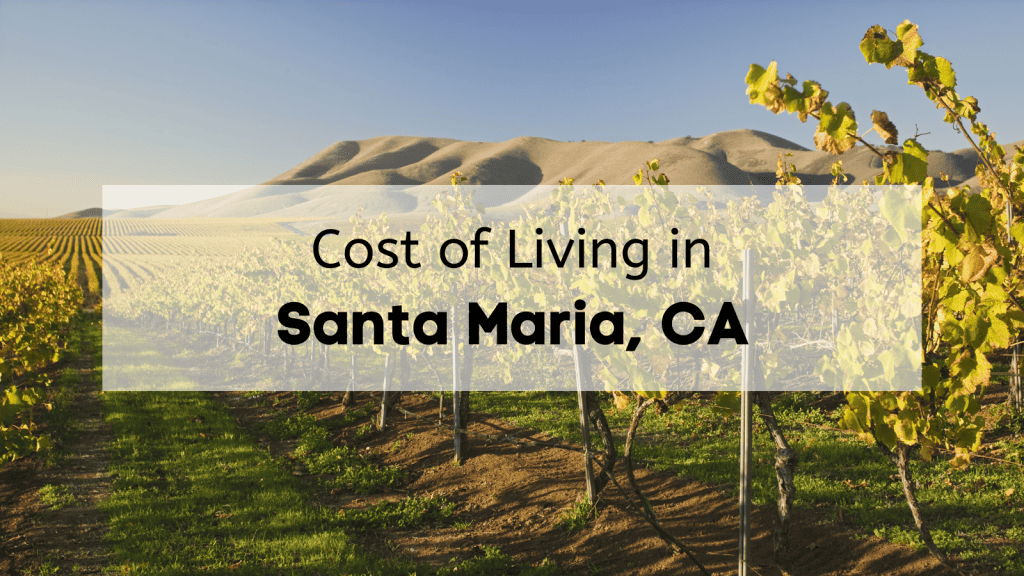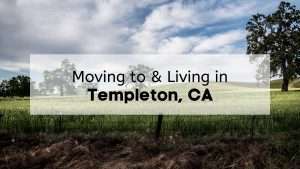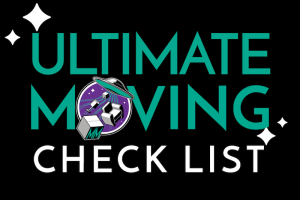Last Updated on: 11th September 2023, 05:26 am
Santa Maria is a peaceful community in Santa Barbara County with fantastic weather and an excellent school system. Like many cities in Southern California, Santa Maria is more expensive than the national average. However, housing costs are more affordable than in nearby communities, which helps offset some of the other expenses. If you’re thinking of moving to Santa Maria, here is an in-depth look at what’s the average cost of living in Santa Maria, CA.
Table of Contents
Santa Maria California Cost of Living Index
A good way to examine the Santa Maria California cost of living is to look at the cost of living index and other data provided by the Bureau of Labor Statistics. The cost of living index is a metric that compares the relative price of a particular area against the national average, represented by 100.
Santa Maria is about 120 miles from Bakersfield and 180 miles from Los Angeles. The COLI for Bakersfield is 102, while the COLI for Los Angeles is 149.4. Most sources say the Santa Maria cost of living index is in between these two cities, at around 120, indicating that it’s 20% more expensive than the rest of the US. It’s a coastal city, unlike the landlocked Bakersfield, and housing prices are more expensive. But it’s much smaller and doesn’t offer as many amenities and attractions as Los Angeles, which makes the Santa Maria cost of living index slightly lower.
Many people also wonder about the cost of living comparison between El Paso, TX and Santa Maria California. The COLI for El Paso is 90, which indicates it’s 10% lower than the national average and 30% less expensive than the average cost of living in Santa Maria, CA.
Another good statistic to look at is the consumer price index, which measures the average fluctuation in the prices paid by residents in an area. The CPI for the Western United States indicates that area prices are up by 0.1% over the past month and 3.5% in the past year. The price of energy alone increased by 1.4% in the past month, mainly due to an increase in electricity prices. The cost of housing also increased by 5.7% in the past year, while the price of used cars and trucks decreased by 5.8%, offsetting some of the higher increases.
The consumer expenditure survey can also be helpful in analyzing the cost of living, which charts how much the average American spends on common goods. According to the 2021 consumer expenditure survey for the state of California, the average household spends about $72,468.43 per year. The largest expense is housing, and the average household spends about $28,247.14 per year or $2353.92 per month. However, this includes all housing-related expenses, including the cost of shelter, taxes, mortgage interest, maintenance, etc.
View this post on Instagram
A post shared by Santa Maria Valley | Your Next California Vacation (@santamariavalley)
Other significant expenditures:
- Food: $9,097.22
- Utilities: $4,329.22
- Transportation: $10,640.28
- Healthcare: $5,154.83
- Entertainment: $3,322.72
The Family Budget Calculator developed by the Economic Policy Institute says that the average family of four must earn about $122,397 to live comfortably in Santa Barbara County. This takes into account common household expenses such as housing, food, child care, transportation, health care, taxes, and more.
Cost of Household Items, Utilities, Gas and Groceries
Analyzing data can be a great way to understand the Santa Maria California cost of living in the abstract, but it doesn’t always provide a tangible reference point. A better way to understand your day-to-day expenses is to look at the cost of common household goods like gas and groceries.
Common Santa Maria living expenses:
- Ribeye steak, one pound: $12.77
- Whole milk, 1/2 gallon: $2.22
- One dozen grade-A eggs: $2.38
- Five pound bag of potatoes: $2.58
- One loaf of wheat bread: $3.08
- Six pack of Heineken: $9.16
- 1/4 pound McDonald’s burger: $3.36
- Average phone bill: $174.18
- The average cost of gasoline per gallon: $3.53
The Santa Maria Regional Transit Service operates several bus routes throughout the city. The basic fare is $1.50 ($2.00 for Regional Routes), or $3.00 for a day pass, $12 for a 7-day pass, and $31 for a 31-day pass. Students with valid IDs can get a $0.25 discount on the basic fare, while seniors (60+), persons with disabilities, and Medicare card holders can get a 50% discount. Children under eight years old or under 46″ tall can ride for free with a fare-paying adult.
The average cost of utilities in Santa Maria is $235, which is 33% lower than the national average. The average monthly car insurance premium in Santa Maria is $160 for full coverage, ranging from about $93 to $222.
View this post on Instagram
A post shared by Santa Maria Valley | Your Next California Vacation (@santamariavalley)
Santa Maria Real Estate Market
Housing prices are a major contributor to the cost of living in any area, especially in Southern California. Although the Santa Maria housing market is more costly than the rest of the US, it’s fairly affordable compared to the rest of Santa Barbara County.
The Santa Maria real estate market is very competitive, and most homes sell for 1% above the list price and go pending within 20 days. However, more desirable Santa Maria homes for sale usually go for 3% above asking within seven days. Santa Maria is evenly divided between tenants and homeowners, and tenants and 50% by owners occupy 50% of homes.
View this post on Instagram
A post shared by Santa Maria Valley | Your Next California Vacation (@santamariavalley)
Redfin states that the Santa Maria median home price is $610,000, which is up by 11.9% year over year. The Santa Maria average home price is at a record high following a steady increase from January to April, followed by a dip in May and June. The median price per square foot of Santa Maria real estate is $363, which is up by 7.7% since last year. Most listed homes receive six offers on average and sell within 15 days.
The price-to-rent ratio in Santa Maria is 21.6, which indicates it’s typically better to rent than to buy a home. The lower the ratio, the better it is for renters, and anything above 21 means better conditions for tenants.
But like any area, the Santa Maria housing market is diverse, and prices vary from place to place. Here are a few of the most expensive and affordable neighborhoods with median housing prices.
Most Expensive Santa Maria Neighborhoods:
- Foxenwood: $830,000
- Country Club Gardens: $730,000
- Sunrise Hills Estates: $683,000
- Park Villas: $675,000
- Blosser Southwest: $655,000
Most Affordable Neighborhoods:
- Country Club Village: $315,000
- Mid-City Acres: $485,000
- Morro Estates: $562,000
- Downtown Santa Maria: $585,000
Santa Maria Rental Market
Rentcafe states that the average rent in Santa Maria is $2,345 per month. That means the Santa Maria rent is 31.7% higher than the rest of the US. However, it’s 18.9% lower than the nearby city of Santa Barbara. Prices start at $1300 for a studio apartment and go up to $4,175 for a 3-bedroom. About 65% of all apartments are over $2,000, and 31% are $1,500 to $2,000.
According to the ATTOM Rental Affordability Report, it’s cheaper to rent in Santa Maria than it is to buy a home. The Out of Reach Report from the National Low Income Housing Coalition shows that California has the highest renter wage in the country, which is the amount the hourly worker would need to earn to comfortably afford the average rent. The state renter wage is $42.25, while in the Santa Maria – Santa Barbara area, it’s $51.29, the 5th highest in the state.
Average Salary & Household Income in Santa Maria
Although looking at the cost of household goods and housing is a great way to get a sense of the cost of living in Santa Maria CA, it’s also important to consider the average wages and relative buying power of a standard resident.
The median household income in Santa Maria is $69,715, which is about 20% lower than the statewide amount and the greater Santa Maria Santa Barbara area. The median per capita income is only $24,171, about 40% lower than the rest of California and the broader area. According to Payscale, the average rate for an hourly worker in Santa Maria is $21.09 per hour.
The average hourly wage for common Santa Maria jobs include:
- Medical assistant: $20
- Registered nurse: $44
- Registered dental assistant: $20
- Licensed vocational nurse: $26
- Bookkeeper: $20
Due to the relatively high cost of housing compared to the lower median income, Santa Maria is one of the most expensive communities in the country. The average hourly rate is less than half the average renter wage in the area, and the median household income is also close to 50% lower than the income needed to live comfortably in the area. However, this includes all of Santa Barbara County, which also features pricier areas than Santa Maria.
According to the Bureau of Labor Statistics, the most common profession in the Santa Barbara- Santa Maria area is food preparation and serving, which pays an average hourly rate of $17.80. However, the next highest is office and administrative support, which pays an hourly rate of $24.35. The highest-earning occupations are computer information and research scientists ($355,510 per year), family medicine physicians ($258,040 per year), and chief executives ($242,320 per year). The jobs with the highest rise in employment rates are compensation, benefits, and job analyst specialists, physicians, and maintenance workers.
View this post on Instagram
A post shared by Santa Maria Valley | Your Next California Vacation (@santamariavalley)
Income, Sales, & Property Taxes in Santa Maria
It’s great to know how much you can potentially earn by living in Santa Maria, but it’s also crucial to know how much you will owe the government. California has some of the highest taxes in the country, so you should be sure to factor this additional expense into your overall budget.
Santa Maria Income Tax
The California income tax rate is a progressive system with nine tax brackets ranging from 1% to 12.3%, depending on how much money you make. Residents who make over $1 million per year will pay an additional 1% surcharge on top of the regular tax rate. The average Santa Maria income tax rate is 9.3%, compared to the US average of 4.3%.
Santa Maria Sales Tax
The Santa Maria sales tax rate is 8.75%. California has a base sales tax rate of 6%. Santa Barbara County also charges an additional 0.25% and a 1.5% special tax, while the city of Santa Maria charges an additional 1% tax. All of this adds up to a total of 8.75% minimum sales tax rate.
| California Sales Tax | 6% |
| Santa Barbara County Tax | 0.25% |
| Santa Barbara County Special Tax | 1.5% |
| Santa Maria Sales Tax | 1% |
| Total | 8.75% |
Santa Maria Property Tax
Santa Barbara County charges an ad valorem tax based on the value of the assessed property, which is collected by the Treasurer-Tax Collector. The County Assessor is responsible for determining a fair market value of your home, which will determine your tax rate. The Santa Barbara County Property tax rate is $5.10 for every $1,000 real estate value or 0.51%.
So the median property tax bill in Santa Maria is around $3111, based on a median home value of $610,000. You can learn more about Santa Barbara County property taxes by reading our complete guide.
Now that you know the average cost of living in Santa Maria, CA, you’re ready to plan your upcoming move. Trust our dependable team of movers in Santa Maria to take you where you need to go. Call 805-779-3844 today for a free, personalized moving estimate.










